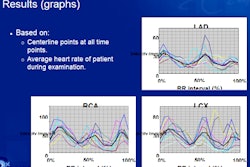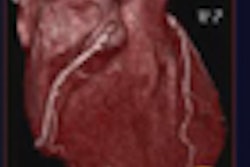In its first major test, the new proposed T classification system for lung cancer, based mainly on tumor dimension, was found to be effective and appropriate for determining the pathologic invasiveness of primary tumors.
The study, published in the January issue of the Journal of Thoracic Oncology, sought to determine the efficacy of the recent reclassification of the T category in the International Association for the Study of Lung Cancer (IASLC) International Staging Committee's Staging Manual in Thoracic Oncology.
The forthcoming TNM classification, the first revision in 12 years, proposed revisions for lung cancer staging, mainly in the T category, creating strict cutoff points for tumor severity based on lesion size (e.g., 2, 3, 5, and 7 cm). The proposed changes were determined and validated based on overall survival rates in a large international database.
In the study, Dr. Tokuhiro Yano from Kyushu University in Fukuoka, Japan, and colleagues examined the medical records of 1,393 patients with non-small cell lung cancer who underwent complete resection, reviewing the cases thoroughly for pathologic findings and survival rates (J Thorac Oncol, January 2010, Vol. 5:1, pp. 45-48).
Staging for all patients was pathologically defined according to the present international staging system, previously revised in 1997.
Based on the greatest dimension of the primary tumor, the five-year postoperative survival was 77.8% for T1a (≤ 2 cm), 63.3% for T1b (≤ 3 cm), 46.4% for T2a (≤ 5 cm), 38.8% for T2b (≤ 7 cm), and 21.4% for T3 (> 7 cm). The differences were statistically significant among all new T categories.
Meanwhile, the incidence of lymphatic invasion within the primary tumor was 17.2% for T1b and 29.8% for T2a (T1b versus T2a, p < 0.05). The incidence of vascular invasion within the primary tumor was 24.9% for T1b, 35.3% for T2a, and 54.2% for T2b (T1b versus T2a and T2a versus T2b, p < 0.05).
Conversely, significant differences were seen among proposed T subsets in lymphatic, vascular, and pleural invasion. The incidence of pleural invasion was 18.1% for T1a, 29.4% for T1b, 49.3% for T2a, 47.3% for T2b, and 87.5% for T3 (T1a versus T1b, T1b versus T2a, T2b versus T3, p < 0.05).
Significant differences were also found in at least one incidence of lymphatic permeation, vascular invasion, or pleural invasion, when both cases with any pN status and only those with pN0 status were analyzed.
The differences in overall survival between tumors with a pN0 status were not statistically significant owing to the small sample size, but the revised system "is nevertheless considered to be appropriate," Yano et al wrote.
Related Reading
TNM lung cancer classification needs fine tuning, October 12, 2009
New lung cancer staging guidelines reflect improved CT, survival data, June 1, 2009
Ultrasound useful in detecting chest wall invasion by lung tumor, May 2, 2008
PET outperforms CT for diagnosis of solitary pulmonary nodules, February 18, 2008
Minimally invasive methods allow near-complete lung cancer staging, February 7, 2008
Copyright © 2010 AuntMinnie.com




















